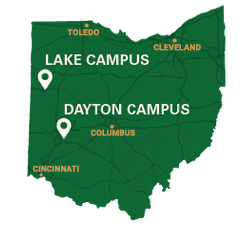
Exposure to heat, from exertion or hot environments, can cause illness and death. Heat illnesses include heat stroke, heat exhaustion, heat cramps, and heat rashes.
Preventative Steps
- Monitor your physical condition and that of your coworkers for signs or symptoms of heat illnesses.
- Wear light-colored, loose-fitting, breathable clothing such as cotton.
- Avoid non-breathable synthetic clothing.
- Gradually build up to heavy work.
- Schedule heavy work during the coolest parts of day.
- Take more breaks when doing heavier work, and in the high heat and humidity.
- Take breaks in the shade or a cool area.
- Drink water frequently. Drink enough water that you never become thirsty.
- Be aware that protective clothing or personal protective equipment may increase the risk of heat-related illnesses.
Heat Stroke
Heat stroke is a condition that occurs when the body becomes unable to control its temperature, and can cause death or permanent disability. Heat stroke is a medical emergency that may result in death!
Symptoms
- High body temperature
- Confusion
- Loss of coordination
- Hot, dry skin or profuse sweating
- Throbbing headache
- Seizures, coma
Heat Exhaustion
Heat exhaustion is the body's response to an excessive loss of water and salt, usually through sweating.
Symptoms
- Rapid heart beat
- Heavy sweating
- Extreme weakness or fatigue
- Dizziness
- Nausea, vomiting
- Irritability
- Fast, shallow breathing
- Slightly elevated body temperature
Heat Cramps
Heat cramps affect workers who sweat a lot during strenuous activity. Sweating depletes the body's salt and moisture levels.
Symptoms
- Muscle cramps, pain, or spasms in the abdomen, arms or legs
What to Do When a Worker is Ill from the Heat
- Call a supervisor for help. If the supervisor is not available call 9-1-1.
- Have someone stay with the worker until help arrives.
- Move the worker to a cooler/shaded area.
- Remove outer clothing.
- Fan and mist the worker with water; apply ice (ice bags or ice towels).
- Provide cool drinking water, if able to drink.
Additional Information
Heat Stress QuickCard provided by Occupational Safety & Health Administration (OSHA) Two-page summary that provides essential precautionary measures that employers should take any time temperatures are high and the job involves physical work.
OSHA's Heat Smartphone App Use your smartphone to check the heat index for your location and see reminders about the protective measures for the specified risk level.
NIOSH Fast Facts: Protecting Yourself from Heat Stressa Two-page summary of Heat-related illnesses, symptoms, first aid, and prevention measures.
Questions?
Click here to contact Ron Hamilton, our Environmental Health and Safety Specialist. You can also call: 937-775-3810

